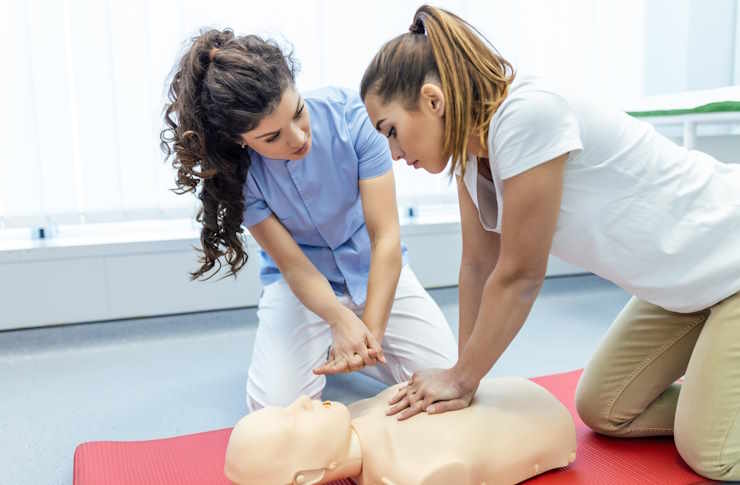Launch a Healthcare Career with Medical Assistant Programs
Medical assistant training provides hands-on and administrative skills for a growing allied-health role. This guide outlines core coursework, clinical practicum, certification options, program formats (certificate, diploma, associate), and realistic timelines. Learn where to study, what employers look for, exam costs, and action steps to boost employability in clinics, hospitals, and specialty practices.

Launch a Healthcare Career with Medical Assistant Programs
Medical assistant training is one of the most direct paths into patient-centered healthcare. Programs pair classroom instruction with supervised clinical experience so learners develop both technical abilities and front-office competencies. Whether you pursue a short certificate, a diploma, or a two-year associate degree, the curriculum is designed to equip you for entry-level roles and to lay groundwork for upward mobility.
What you’ll learn
Training blends clinical procedures with administrative tasks so graduates can support a variety of functions in medical settings. Typical topics include:
- Medical terminology and professional communication to interact effectively with patients and colleagues
- Fundamentals of human anatomy and physiology to understand patient conditions and clinical procedures
- Principles of pharmacology and safe medication administration
- Core clinical skills such as venipuncture (drawing blood), measuring vital signs, EKG basics, and wound care
- Front-desk operations: appointment scheduling, billing, coding basics, and claims processing
- Electronic health records (EHR) use, secure data handling, and privacy best practices
- Healthcare law, HIPAA compliance, and ethical conduct in patient care
Most programs include lab sessions and externships where students practice procedures and office workflows under supervision, reinforcing classroom learning and building confidence with patient interactions.
Program lengths and credentials
Program duration and depth depend on the credential you choose. Certificate and diploma tracks usually target rapid workforce entry and can be completed in about 9 to 12 months. These options concentrate on hands-on skills and clinical fundamentals.
Associate degree programs typically span roughly two years and incorporate broader coursework, including general education and expanded clinical or management topics. An associate degree may better position graduates for supervisory roles or for transferring credits into related health science bachelor programs.
Which route to take depends on your timeline, budget, and career goals. Certificates and diplomas are faster and often less expensive; an associate degree can provide more flexibility for advancement or further education.
Where to get trained
Several types of schools offer medical assistant education, each with distinct benefits:
- Community colleges: Affordable tuition, structured curricula, and local clinical partnerships that help place students in real practices.
- Vocational and technical schools: Career-focused training that emphasizes practical competencies and job-readiness.
- Online or hybrid programs: Course content delivered remotely with arranged local externships for clinical practice—useful for students balancing work or family commitments.
- Hospital-based programs: Some hospitals and health systems run internal training programs that can lead directly to hiring pipelines.
When choosing a program, evaluate the length, hands-on clinical opportunities, career services, externship locations, and connections to employers in your area.
Accreditation to check
Accreditation affects certification eligibility and employer recognition. Programs accredited by agencies such as the Commission on Accreditation of Allied Health Education Programs (CAAHEP) or the Accrediting Bureau of Health Education Schools (ABHES) are widely accepted. Graduating from an accredited program often streamlines the path to national certification and signals program quality to hiring managers.
Job outlook and typical workplaces
Employment prospects for medical assistants remain strong. The U.S. Bureau of Labor Statistics projects growth faster than the average for all occupations, driven by an aging population, emphasis on preventive care, and the expansion of outpatient services.
Common workplaces include:
- Physician offices and private clinics
- Hospital outpatient departments
- Specialty practices (e.g., cardiology, orthopedics, ophthalmology)
- Urgent care and walk-in centers
- Long-term care and assisted-living facilities
With experience and additional credentials or coursework, medical assistants can move into supervisory positions, administrative roles, or specialized clinical support jobs like clinical research assistant or practice manager.
Certification options and estimated costs
Certification is often preferred or required by employers as proof of competence. Several national credentials exist, each with different eligibility routes and fees. Below is a summary of common certifications and typical exam costs:
| Certification | Certifying Body | Eligibility Requirements | Exam Cost |
|---|---|---|---|
| CMA | American Association of Medical Assistants (AAMA) | Graduate of a CAAHEP- or ABHES-accredited MA program | $125–$250 |
| RMA | American Medical Technologists (AMT) | Multiple pathways: accredited program graduate or documented work experience | $120 |
| NCMA | National Center for Competency Testing (NCCT) | Completion of an accredited program or qualifying work experience | $90 |
| CCMA | National Healthcareer Association (NHA) | High school diploma/equivalent plus formal training or work experience | $155 |
Prices and fees are estimates and may change; independent research is recommended before making financial decisions.
How to prepare and stand out
Follow these practical steps to strengthen your application and accelerate career progress:
- Choose an accredited program that provides supervised clinical placements and aligns with your long-term objectives.
- Pursue internships, externships, or volunteer opportunities to gain hands-on experience and comfort with patient care tasks.
- Build interpersonal strengths—empathy, clear spoken and written communication, and teamwork are essential in any clinical environment.
- Learn common healthcare technologies, especially EHR systems and practice management software used by clinics.
- Plan to sit for a national certification exam after graduation; certification often improves hiring prospects and potential pay.
- Network with practitioners, attend local healthcare job fairs, and join professional associations to discover openings and learn workplace best practices.
Medical assistant training is a practical, accessible way to enter healthcare, combining technical instruction with patient-centered skills. Completing an accredited program, gaining supervised clinical experience, and earning certification will make you a stronger candidate and open doors across primary care, specialty clinics, and outpatient settings.
This article is for informational purposes only and should not be considered medical advice. Please consult a qualified healthcare professional for personalized guidance and treatment.






